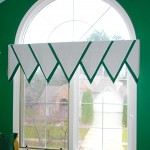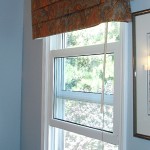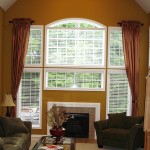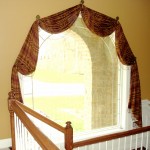What is your window style?
First of all we should look at some types of windows. Most homes have fixed windows meaning that they cannot be opened. Another common window is a casement, which is hinged to swing open and shut. Double hung windows are also common and they can be operated by sliding one half of the window up or down. Often a large fixed picture window is flanked with smaller windows that are not fixed such as casements or double hung. These can be Palladian style, which means a group of three windows with an arch over the center. This is a very classical window and often visually dominates the room. It can also be a bay window with the difference being that the two outer windows are set at an angle creating an alcove, a great spot for a cozy nook. Most of our homes today incorporate these windows into their architecture.
There are also a variety of specialty windows such as clerestory type, a strip of horizontal panes set high up on a wall near the ceiling and jalousie, a window that has horizontal slats that open louver style. There are portholes, skylights, elliptical and oval windows, not to mention triangular or trapezoid windows.

Triangular, cathedral window. Floor to ceiling panels accentuate the height of the room and unify the windows.
When choosing window treatments the space around the window should be taken into consideration. Is it in a corner, on either side of a fireplace, are there chair or crown moldings? What are the proportions; are the ceilings low or perhaps high? What is the scale of the window, the size or the line and balance? What about it’s visual weight? A window is tied to a room both architecturally and visually.
Window treatments can enhance certain architectural details or cover them up if needed. They can broaden the area and add height to windows that are too small for the space yet downplay and simplify a large window.
Window function also plays a big roll in decorating. In which direction does it open, does it slide on a track? Where is the crank or the handle located and how much does it protrude? These items may not seem to significant but drapery panels can get caught in the track of sliding doors and roman shades or blinds can get hung up on cranks and handles. Ease of use and function are very important when choosing window treatments.









by Susan Dorbeck